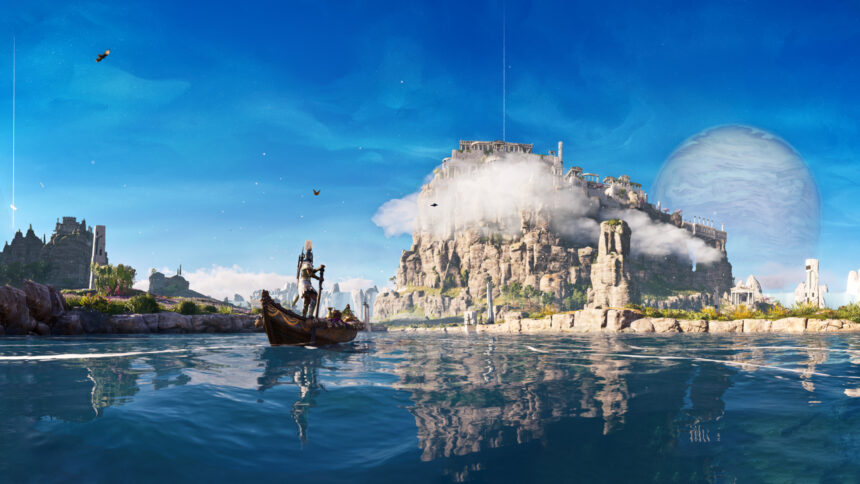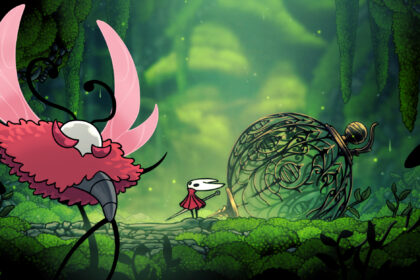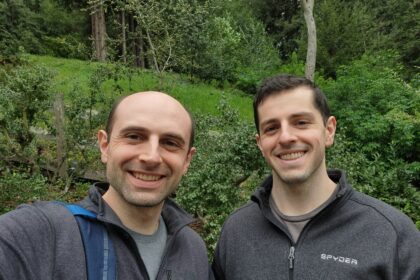Assassin’s Creed is a game where, in the words of AC Odyssey’s world director, Ban Hall, “verticality is really important.” It’s always been a game about seeing a giant cathedral or something, scrambling up to the top, and then admiring the view before swan-diving off. Even at more of a street level, you’re still constantly gaining that little bit of height for sightlines and combat advantages. It is a game that wants players to climb.
Which meant that AC Odyssey had a little bit of an issue. Ancient Greece, you see, was just not known for its skyscrapers. Speaking to Edge Magazine for the venerable tome’s 413th issue (spotted by GR+), Hall says, “It really is a climbing-frame game, and it’s about moving the players through those spaces and going up and down things as much as anything else.”
So when you’re working on, for example, Assassin’s Creed Syndicate and London in the 19th century, you have an absolute embarrassment of riches for this purpose. Hall says when the AC team was working on Syndicate, much time was spent on “creating those desire lines for players to take” up one of the many enormous buildings in Britain’s capital. “How do you attract the players who want to spend their time elsewhere to climb this particular monument you need them to climb?”
But when it comes to Odyssey, “a lot of the buildings and the points of interest we were building were much smaller.” Ancient Greece is not exactly short of grand buildings and architectural glories: it’s just that none of them are especially tall. The Parthenon is incredible, but it’s a mere 14 metres tall: and for high-diving assassins, that just don’t cut it.
The tallest structure in Ancient Greece is likely to have been the Colossus of Rhodes, one of the seven ancient wonders of the world. And this is where the Odyssey team hit upon their solution for the videogame version of Ancient Greece: AC games always straddle a fine line with historical accuracy anyway, so adding a few more statues seems like a no-brainer.
“That’s kind of where some of the ideation came from when it came to building some of the big statues that we put around Greece,” said Hall. “They were always based on mythological or historical fact, always based on working with the research team, working with a historian. But what we did was we took a fantastical approach to the giant statue that then gave us something epic to climb.
“It gave the player a distraction. So you could be on your main quest, going across to a different town, but like: ‘Oh, there’s that: I’m going to go check that out.’ Then you get that climbing, you get that verticality.”
Read the full article here










